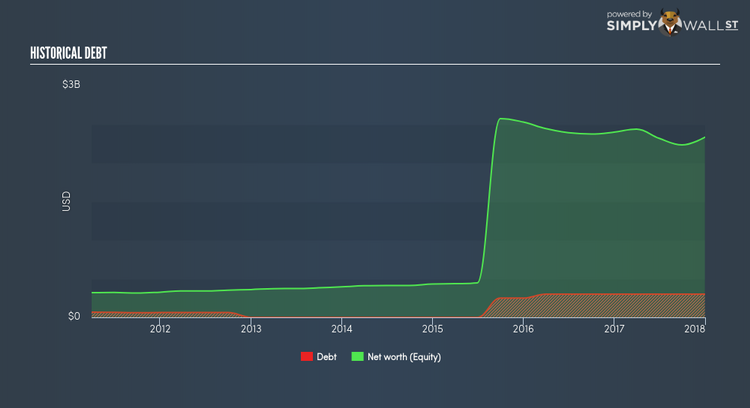NetScout Systems Inc (NASDAQ:NTCT): Financial Strength Analysis

Small and large cap stocks are widely popular for a variety of reasons, however, mid-cap companies such as NetScout Systems Inc (NASDAQ:NTCT), with a market cap of US$2.23B, often get neglected by retail investors. However, generally ignored mid-caps have historically delivered better risk-adjusted returns than the two other categories of stocks. Today we will look at NTCT’s financial liquidity and debt levels, which are strong indicators for whether the company can weather economic downturns or fund strategic acquisitions for future growth. Don’t forget that this is a general and concentrated examination of Amazon’s financial health, so you should conduct further analysis into NTCT here. See our latest analysis for NetScout Systems
Does NTCT generate an acceptable amount of cash through operations?
Over the past year, NTCT has maintained its debt levels at around US$300.00M – this includes both the current and long-term debt. At this constant level of debt, NTCT currently has US$442.77M remaining in cash and short-term investments for investing into the business. Moreover, NTCT has generated cash from operations of US$227.81M over the same time period, leading to an operating cash to total debt ratio of 75.94%, meaning that NTCT’s current level of operating cash is high enough to cover debt. This ratio can also be interpreted as a measure of efficiency as an alternative to return on assets. In NTCT’s case, it is able to generate 0.76x cash from its debt capital.
Does NTCT’s liquid assets cover its short-term commitments?
Looking at NTCT’s most recent US$460.19M liabilities, it appears that the company has been able to meet these obligations given the level of current assets of US$854.47M, with a current ratio of 1.86x. For Communications companies, this ratio is within a sensible range as there’s enough of a cash buffer without holding too capital in low return investments.
Does NTCT face the risk of succumbing to its debt-load?
With a debt-to-equity ratio of 12.87%, NTCT’s debt level may be seen as prudent. This range is considered safe as NTCT is not taking on too much debt obligation, which can be restrictive and risky for equity-holders. We can check to see whether NTCT is able to meet its debt obligations by looking at the net interest coverage ratio. A company generating earnings before interest and tax (EBIT) at least three times its net interest payments is considered financially sound. In NTCT’s, case, the ratio of 5.61x suggests that interest is appropriately covered, which means that lenders may be inclined to lend more money to the company, as it is seen as safe in terms of payback.
Next Steps:
NTCT has demonstrated its ability to generate sufficient levels of cash flow, while its debt hovers at a safe level. Furthermore, the company exhibits proper management of current assets and upcoming liabilities. I admit this is a fairly basic analysis for NTCT’s financial health. Other important fundamentals need to be considered alongside. You should continue to research NetScout Systems to get a better picture of the stock by looking at:
Future Outlook: What are well-informed industry analysts predicting for NTCT’s future growth? Take a look at our free research report of analyst consensus for NTCT’s outlook.
Valuation: What is NTCT worth today? Is the stock undervalued, even when its growth outlook is factored into its intrinsic value? The intrinsic value infographic in our free research report helps visualize whether NTCT is currently mispriced by the market.
Other High-Performing Stocks: Are there other stocks that provide better prospects with proven track records? Explore our free list of these great stocks here.
To help readers see pass the short term volatility of the financial market, we aim to bring you a long-term focused research analysis purely driven by fundamental data. Note that our analysis does not factor in the latest price sensitive company announcements.
The author is an independent contributor and at the time of publication had no position in the stocks mentioned.

